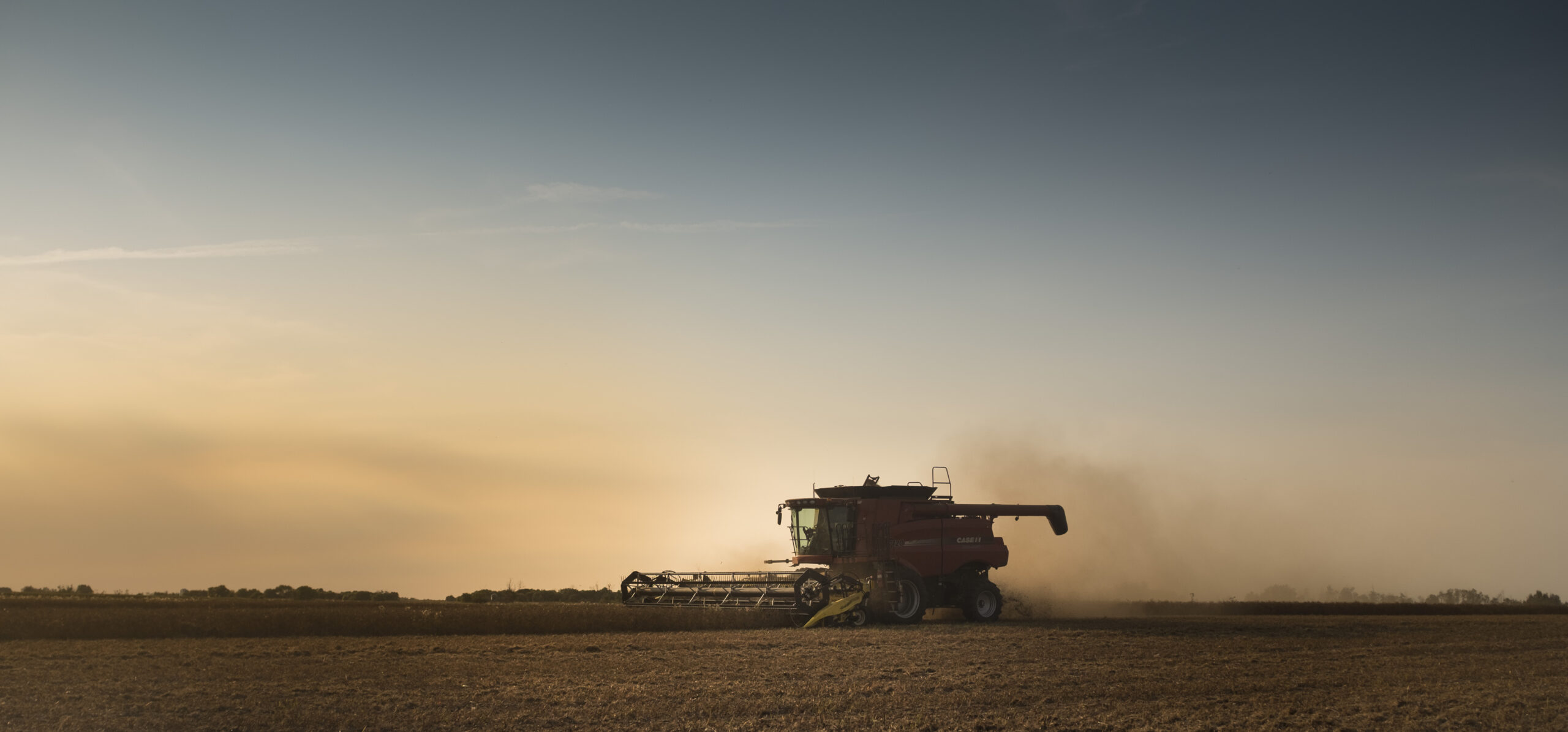Pea plants mature from the bottom up. If swathing or desiccating the crop, it is best to do so when the plants are near maturity. This occurs when the bottom 30% of pods are ripe, the middle 40% are yellow, and the upper 30% are beginning to turn yellow.
Peas can also be left to straight cut without desiccation. In this case, pea crops are ready to harvest when seeds in the bottom pods are detached and loose in the pods, and when the upper pods turn yellow. Once the crop is mature, it can dry down very quickly if the weather is warm and dry.
Harvesting too early will yield immature seeds that are likely to be downgraded, and thus less profitable, when sold on the market. However, harvesting late can result in an overripe crop with dry, brittle pods that are prone to excessive shattering and potentially more weathering damage.
Care should be taken when harvesting peas. Pea seeds containing excessive amounts of foreign material or damaged seeds are suitable only for the feed market. Soil adhered to the seed is called earth tag and is a common factor in downgrading dry peas. The Earth tag may occur during combining when moisture from weeds or heavy dew causes soil or dust to adhere to the seed.
In green peas, seed colour is the most critical grading factor for the human consumption market, where pea prices are greatest. The maximum allowable bleach level for this category is 2%. Bleaching is caused by high humidity, bright sunshine, and warm temperatures. Green peas are susceptible to bleaching as they approach maturity, so it is essential to harvest them promptly. In green peas, the vein pattern in the uppermost pods should be easily recognizable, and 75–90% of pods should be yellow/tan.
Chemicals for Harvest Management & Desiccation
While there are several chemical desiccant options registered for use in pulse crops, glyphosate is often the most used. Glyphosate is not a true desiccant, however, and is considered a harvest aid to control weeds. Pre-harvest glyphosate should be applied when the crop has 30% or less grain moisture or when the majority (75–80%) of the pods are brown. Applying glyphosate too early can reduce yield and seed size and may result in levels of glyphosate in the seed that exceed the maximum allowable levels. Do not apply glyphosate to seed stock pea because irregular germination and seedling development can occur. The desiccant, Glufosinate-ammonium, is not registered for use on peas and should never be used.
Benefits associated with chemical desiccation include earlier crop harvest, reduced shatter loss in the field, reduced risk of exposure to wet weather, and elimination of wind damage to swaths. Standing desiccated crops also dry more rapidly after rain compared to a swathed crop.
Swathing
Swathing will hasten drying and reduce shattering, but pea swaths are highly susceptible to wind damage. Swathers should be equipped with vine lifters (pick-up guards) and/or a pick-up reel to ease the harvest of lodged or tangled crops. The swather can also be used to cut the crop at full maturity. If cut at full maturity, the combine should follow immediately behind to prevent swaths from being damaged or moved by wind. Shattering loss can be high using this method.
When combining a swathed pea crop, match the pick-up speed to the combine’s ground speed. Keep the swath moving uniformly to match the combine’s capacity, reducing seed damage and shatter losses.
Low combine cylinder or rotor speeds are required to reduce seed cracking, typically ranging from 300 to 600 revolutions per minute. An initial concave setting of 0.6–1.5 cm clearance at the front and 1.2 cm at the rear is recommended. Combine and grain augers should be operated at low speeds to minimize seed damage.
Combining
Straight combining without desiccation can be successful; however, there is a risk of shatter loss. Shattering can be reduced by harvesting during the most humid part of the day and by reducing the reel or pick-up speed.
Straight combining works best if the crop is uniformly mature throughout the field, maturity is reached relatively early, and the weather is hot and dry at harvest. Straight-cut headers should be equipped with vine lifters (also known as pick-up guards) to prevent peas from growing close to the ground. Although peas are considered dry at 16% moisture, harvesting at 18–20% allows for an earlier harvest and can reduce weathering loss. It also reduces the risk of seed cracking or peeling and reduces shatter losses. However, threshing at over 20% moisture can increase the amount of earth tag.





